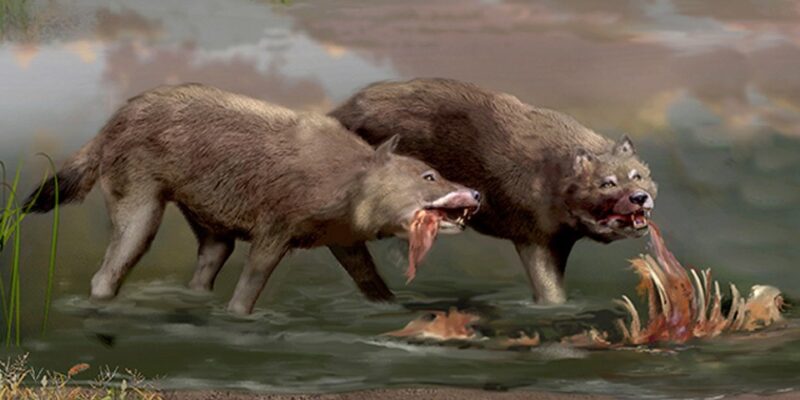
Where science fiction and fantasy converge, a fascinating evolution of the dire wolf emerges—one forged not from flesh and bone, but from metal and circuitry. These mechanical dire wolves represent the enduring power of an extinct predator reimagined through technological advancement, preserving their fearsome legacy in worlds where ancient and futuristic elements collide.
In “Horizon Zero Dawn,” Aloy’s post-apocalyptic world teems with robotic creatures inspired by prehistoric beasts. Among the most formidable are the Scrapper packs—quadrupedal machines whose behavior and pack dynamics mirror those of dire wolves. Their elongated jaws, powerful builds, and coordinated hunting tactics pay homage to Canis dirus, while their ability to process scrap metal reflects the dire wolf’s historical role as a scavenger of megafauna. When players encounter these mechanical predators stalking the ruins of civilization, they’re experiencing a clever reimagining of how dire wolves once dominated Pleistocene landscapes.
The franchise takes this parallel further through the Scorcher machines—larger, more aggressive variants whose imposing size and territorial nature more directly reference dire wolf proportions. Their fire-based attacks symbolize the primal, unstoppable nature attributed to dire wolves in fantasy settings. Game director Mathijs de Jonge confirmed this inspiration, noting that the team studied dire wolf fossil evidence to capture the essence of these ancient predators in their mechanical counterparts.
“Mass Effect” introduces its own interpretation with the Fenrir combat mechs deployed by Eclipse mercenaries. Named after the mythological wolf destined to devour the sun during Ragnarök, these quadrupedal war machines utilize a low-slung, predatory profile directly inspired by dire wolf anatomy. Their targeted jammers mimic the hunting specialization that made dire wolves such efficient predators of larger animals, disrupting shields much as dire wolves would target the hamstrings of megafauna prey.
Independent developers have pushed this concept further. In “Generation Zero,” the Hunter-class machines explicitly reference dire wolves in both their pack behavior and their exaggerated proportions. Unlike their smaller Wolf-class counterparts, Hunters possess reinforced jaws capable of crushing vehicles—a technological parallel to the bone-crushing bite force that differentiated dire wolves from gray wolves.
Tabletop RPGs embracing science-fantasy elements frequently feature mechanical dire wolves as companions or adversaries. Paizo’s “Starfinder” includes synthetic dire wolves as both security constructs and specialized combat drones. These creations retain the intelligence and pack coordination of their organic inspirations while incorporating weapon systems and enhanced sensory capabilities. The game’s “Dire Wolf Combat Frame” represents a particularly sought-after piece of technology, allowing users to pilot a mech designed around dire wolf hunting principles.
The enduring appeal of mechanical dire wolves in science-fantasy contexts speaks to their perfect symbolic position: they represent nature’s perfect predator design, refined further through technological advancement. Their presence in these settings creates an elegant bridge between prehistoric realities and futuristic possibilities.
For creators of science-fantasy worlds, mechanical dire wolves serve multiple narrative functions. They provide formidable, recognizable threats that carry cultural weight through their connection to extinction narratives. They symbolize humanity’s tendency to weaponize natural designs. Most poignantly, they suggest that even in futures where organic life has been supplanted, the shadow of the dire wolf—a predator so perfect it dominated an entire epoch—continues to influence how we envision apex predators.
Whether stalking the ruins of human civilization or hunting across alien landscapes, these mechanical descendants ensure that the dire wolf’s legacy endures even in worlds where their bones have long since turned to dust.






